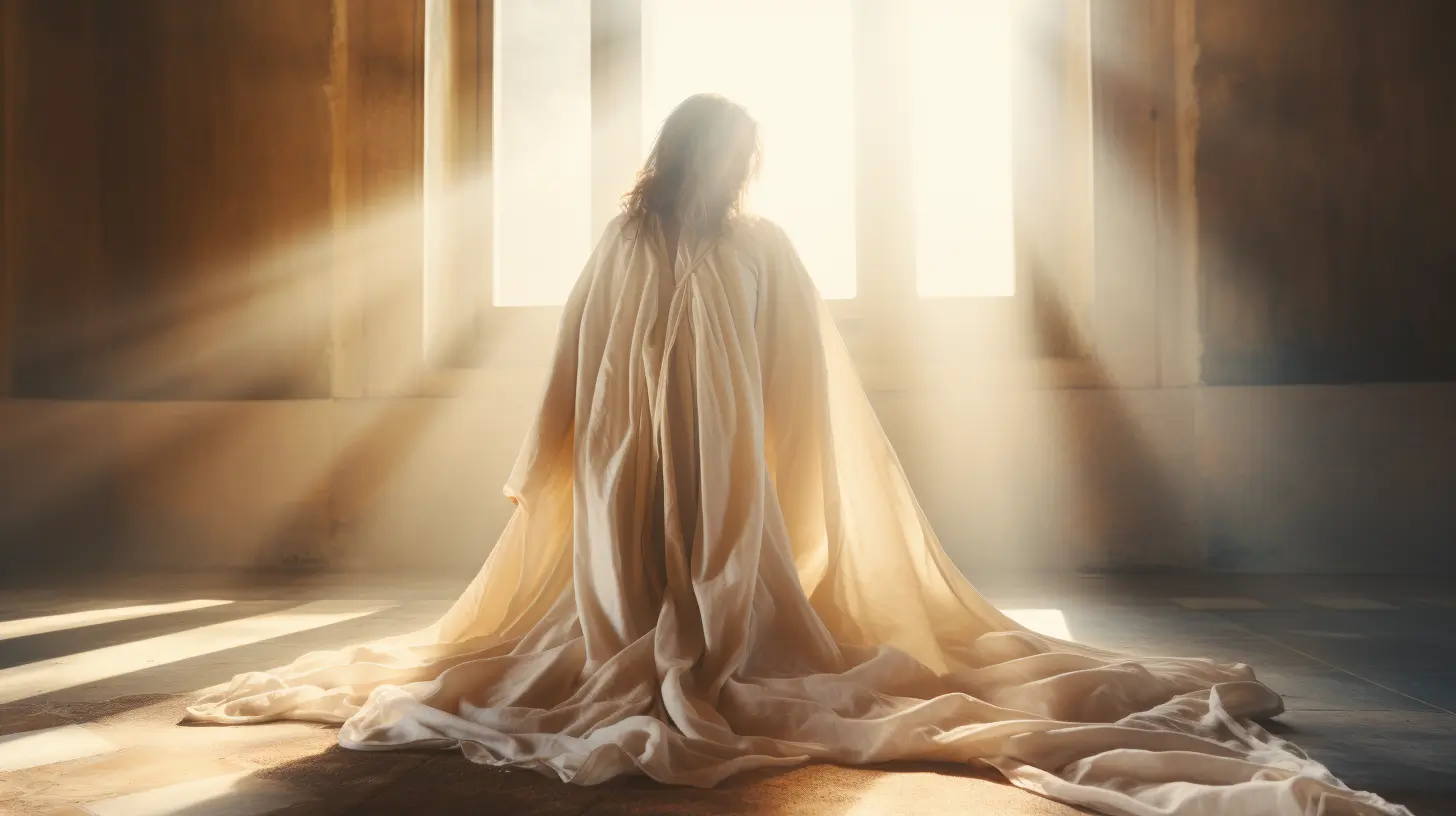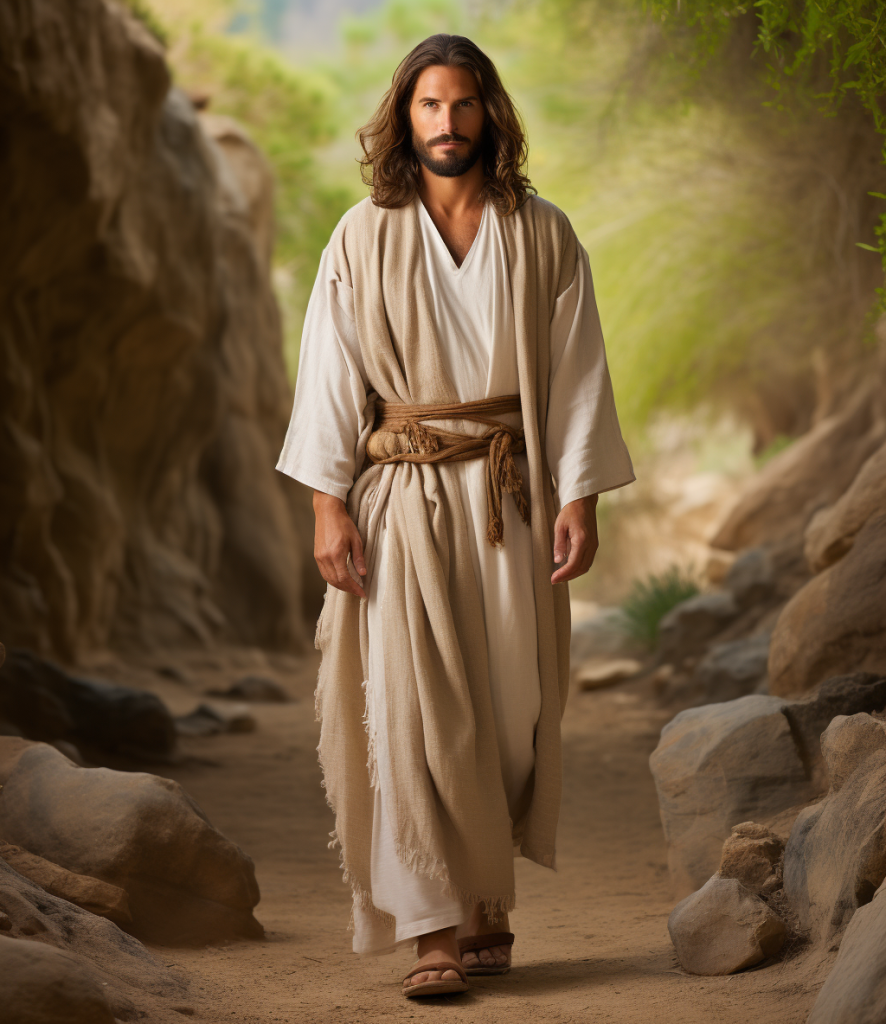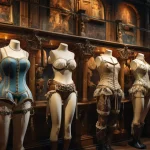
Divine Drapery: Unraveling the Fashion of Jesus Christ
Welcome, dear readers, to a journey back in time, where we peel back the layers of history to uncover the fashion of a figure who forever changed the world—Jesus Christ. In this exploration, we aren’t just looking at fabrics and trends; we’re delving into a story woven with faith, simplicity, and profound symbolism. The garments of Jesus Christ, though humble and unpretentious, carry messages that transcend time and fashion.
As we embark on this exploration, let’s remind ourselves that fashion is more than just attire—it’s a language, a narrative that speaks of its wearer’s journey and values. In the case of Jesus Christ, his clothing was a testament to his teachings, echoing the virtues of humility and modesty. Through this blog post, we aim to look beyond the threads and colors, seeking a deeper understanding of the cultural and historical significance of Jesus Christ’s attire. We’re not just exploring fabric; we’re uncovering the rich tapestry of faith, history, and values that his fashion symbolizes.
So, join me on this enlightening exploration, as we travel back to the ancient Near East, unraveling the fashion that adorned one of history’s most pivotal figures. Together, let’s discover how the simple garments of Jesus Christ hold profound lessons and enduring influence, resonating through centuries as a symbol of timeless values and eternal style.

Historical Context of Clothing in Jesus’ Time
As we delve into the realm of ancient fashion, it’s crucial to transport ourselves back to the time of Jesus Christ, a period rich with cultural and historical significance. The clothing of this era wasn’t just a matter of style or personal preference; it was a reflection of one’s social standing, occupation, and, importantly, their spiritual beliefs.
The Fabric of Society
In Jesus’ time, the choice of fabric was a telling indicator of one’s social status. The common folk, including Jesus himself, often wore garments made from linen or wool. These materials, while humble, were cherished for their practicality and comfort in the region’s climate. Linen, derived from the flax plant, was favored in warmer seasons for its breathability, while wool provided necessary warmth during cooler times.
Colors and Styles: A Symbolic Palette
The color palette of this period was predominantly natural, dictated by the dyes available. Richer colors like purple and crimson were reserved for the affluent, symbolizing wealth and power. In contrast, the ordinary people, and figures like Jesus, opted for undyed clothing, often in earthy tones, signifying humility and a connection to the simpler aspects of life.
As for styles, men typically wore a tunic, a simple knee-length garment, paired with a mantle or cloak for additional covering. The simplicity of Jesus’ attire, often depicted as a seamless robe, is a point of significant focus in religious texts, symbolizing unity and wholeness.
Function Over Fashion
In a time where survival often took precedence over aesthetics, clothing was designed for functionality. Garments were loose-fitting, allowing for ease of movement, crucial for the day-to-day tasks and travels of the era. This practicality, however, did not detract from the garments’ symbolic value, as seen in the seamless robe of Jesus, which has been a subject of theological interest and artistic representation over the ages.
Through this exploration of the fabrics, colors, and styles of Jesus Christ’s time, we gain a glimpse into the world he inhabited—a world where fashion was a reflection of one’s life and values. In the next section, we’ll take a closer look at the specific garments associated with Jesus, delving deeper into their significance and symbolism.
Jesus Christ’s Garments: A Closer Look
In this section, we turn our focus to the garments that Jesus Christ himself wore. These clothes are more than just ancient attire; they are a testament to His life’s message and mission. Let’s explore these garments, understanding their cultural and spiritual significance.
The Humble Robe: A Symbol of Unity
Central to Jesus’ wardrobe was the seamless robe, a garment that has captured the imagination and reverence of believers through the ages. This robe, often depicted in art and scripture, was likely made from a single piece of cloth, symbolizing unity and integrity. Such a garment, devoid of ostentation, reflects Jesus’ commitment to a life of simplicity and purpose. It’s a powerful reminder that true value lies not in material wealth, but in spiritual richness.
The Mantle of Modesty
Alongside the seamless robe, Jesus often wore a mantle or cloak. This outer garment served practical purposes, offering protection from the elements during His travels. Yet, spiritually, it represented a mantle of modesty and humility, qualities central to Jesus’ teachings. In a world where one’s attire often reflected social status, Jesus’ choice of simple clothing was a deliberate statement of His mission to serve and uplift the humble and downtrodden.
Sandals: The Journey of Faith
The sandals on Jesus’ feet, though a minor detail, speak volumes. In a time and place where many went barefoot, sandals were a basic necessity for travelers. Jesus’ sandals symbolized His earthly journey, walking tirelessly across lands to spread His message of love and redemption. They remind us that the path of faith is often a humble yet relentless journey, grounded in the reality of life’s challenges.
A Timeless Message Through Fabric and Thread
In contemplating the garments of Jesus Christ, we are reminded of the timeless message they carry. They speak of a life lived with purpose and humility, a life that embraced simplicity in a way that transcended the material and touched the spiritual. Jesus’ attire is a testament to His teachings, serving as a silent yet powerful sermon on the values of modesty, unity, and purpose.
In the next section, we will explore how artists through the ages have depicted these humble yet significant garments, further enriching our understanding of their symbolic power.

Artistic Representations Through the Ages
As we journey further into our exploration of Jesus Christ’s fashion, we arrive at a fascinating intersection of faith and art. Over the centuries, artists have endeavored to capture the essence of Jesus Christ, and his garments have played a pivotal role in these portrayals. Each artistic representation is not just a visual depiction; it’s a reflection of the artist’s interpretation and the cultural context of the time.
The Evolving Canvas of Faith
From the earliest Christian art to contemporary depictions, the portrayal of Jesus Christ’s attire has evolved significantly. In the Byzantine and Medieval periods, artists often adorned Him in regal and ornate garments, highlighting His divine nature. These representations, rich in symbolism and color, were less about historical accuracy and more about conveying theological messages.
As we move to the Renaissance and beyond, there’s a shift towards more realism. Artists like Leonardo da Vinci and Caravaggio brought a humanistic approach to their depictions of Jesus. Here, the garments become more reflective of the era Jesus lived in, focusing on simplicity and authenticity. This shift wasn’t just artistic; it mirrored a deeper understanding and connection with the human aspects of Jesus’ life.
A Tapestry of Interpretations
Each era’s artistic style tells a different story of Jesus Christ. The varying depictions of His garments – from opulent robes to simple tunics – reveal how societal values and religious perceptions have shaped His image. In contemporary art, interpretations vary even more, with some artists choosing abstract forms to represent Jesus, focusing on the essence rather than the literal depiction of His attire.
Beyond the Canvas
These artistic interpretations do more than just depict ancient fashion; they offer us a window into the evolving relationship between society and the sacred. The way Jesus Christ is dressed in art speaks to how each generation understands and connects with Him. It’s a dialogue between the past and the present, a visual narrative that continues to evolve.
The Influence of Jesus Christ’s Fashion
In this section, let’s explore the far-reaching impact of Jesus Christ’s fashion. His simple yet profound choice of attire transcends time and continues to inspire and influence even in our modern world. The simplicity of His garments carries a message that resonates across centuries, cultures, and even into the realms of contemporary fashion and spirituality.
A Spiritual Blueprint in Religious Attire
In religious contexts, particularly within Christian denominations, the influence of Jesus’ humble attire is unmistakable. Priests, monks, and nuns often don simple, modest clothing as a symbol of their devotion and humility, mirroring the simplicity of Jesus. This choice is a constant reminder of their commitment to a life of service and spiritual focus, echoing the teachings of Christ.
Contemporary Fashion and Symbolism
The influence of Jesus Christ’s fashion extends beyond the walls of churches and monasteries. In the world of contemporary fashion, designers have often drawn inspiration from His iconic style. The use of simple lines, minimalistic designs, and a preference for natural fabrics can be seen as a nod to the timeless elegance of Jesus’ attire. This simplicity, rooted in deep symbolism, challenges the often materialistic and fast-paced nature of modern fashion, encouraging a return to the fundamentals of quality, purpose, and meaning.
Beyond Aesthetics: A Message for Today
The most profound influence of Jesus Christ’s fashion lies in the message it conveys. In a world increasingly focused on external appearances and material wealth, His attire serves as a powerful counter-narrative. It reminds us of the value of inner richness over outward adornment, of the essence of being over the facade of having. This message, woven into the very fabric of His garments, invites us to embrace simplicity and authenticity in our lives and choices.
A Timeless Echo in Modern Times
Jesus Christ’s fashion, though rooted in a specific historical context, echoes through the ages as a symbol of timeless values. It inspires a sense of purpose and authenticity, urging us to look beyond the superficial and find beauty and meaning in simplicity and humility.
As we conclude this exploration, we are reminded that the fashion of Jesus Christ is more than a historical curiosity. It is a living, breathing testament to values that are as relevant today as they were two millennia ago.
Cultural and Theological Reflections
As we draw near the end of our journey exploring the fashion of Jesus Christ, let’s pause to reflect on the deeper cultural and theological implications of His attire. His simple garments, transcending mere cloth and thread, carry profound lessons and insights that resonate across time and cultures.
Simplicity as a Reflection of Divine Teachings
At the heart of Jesus Christ’s fashion is the principle of simplicity. This simplicity is not just a matter of style but a profound embodiment of His teachings. In a world often driven by materialism and excess, His choice of humble attire serves as a powerful reminder of the virtues of modesty and the prioritization of spiritual over material wealth. It’s a call to focus on what truly matters in life – compassion, love, and inner peace.
The Symbolism of Unity and Wholeness
The seamless robe of Jesus, a garment of great significance, symbolizes more than unity and integrity in a theological sense. It represents a wholeness of character, a life lived with unwavering purpose and unbroken commitment to His mission. This symbolism extends beyond Christianity, offering a universal message of unity and coherence in one’s life and values.
Fashion as a Cultural Mirror
The evolution of Jesus Christ’s fashion in art and literature mirrors the cultural and societal shifts over the centuries. It reflects how each generation interprets and connects with the divine, providing insights into the changing dynamics of faith, culture, and society. In this way, His garments are not just historical artifacts but living narratives that continue to evolve and inspire.
A Timeless Emblem of Modesty and Purpose
The fashion of Jesus Christ stands as a timeless emblem of modesty, purpose, and spiritual depth. It challenges us to reconsider our values and choices, inspiring a pursuit of a life marked by authenticity and purpose. In a world that often equates value with visibility and worth with wealth, Jesus’ simple attire is a profound statement of a different set of values – those of humility, service, and spiritual richness.
As we step back into our lives, let’s carry with us the lessons and inspirations drawn from this exploration, allowing them to influence not just our understanding of history but our approach to life and our interactions with the world around us.
Embracing the Timeless Message of Jesus Christ’s Fashion
As we wrap up our journey through the fashion of Jesus Christ, we’re left with a tapestry of insights that go far beyond the fabric and style of ancient attire. His simple, yet deeply symbolic garments serve as a profound reminder of the core values he embodied and preached – humility, unity, and a focus on the spiritual over the material.
In today’s world, where fashion often speaks to status and wealth, the attire of Jesus Christ stands in stark contrast. It’s a call to remember that true value and beauty lie not in outward appearances but in the richness of the spirit. His seamless robe, a symbol of wholeness and integrity, challenges us to live lives of purpose and authenticity.
This exploration isn’t just about understanding a historical figure’s fashion; it’s about recognizing the enduring influence of these garments on our culture, art, and spirituality. The simplicity of Jesus Christ’s attire transcends time, continuing to inspire and guide us in a world often lost in the complexity of material pursuits.
As we close this chapter, let’s carry with us the timeless message woven into the very fabric of Jesus Christ’s garments. Let it inspire us to seek a deeper meaning in our own lives, finding beauty in simplicity and richness in our spiritual journey.








